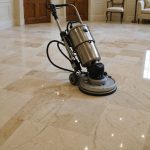Rockwool insulation panels combine durability and exceptional fire resistance with reliable thermal and acoustic performance. Made from natural stone fibers, they slow fire spread while maintaining energy efficiency and sound dampening. Ideal for walls, floors, and roofs, these panels offer a practical, long-lasting solution for safer, more comfortable buildings without compromising on environmental responsibility.
Key Features and Benefits of Rockwool Insulation Panels
Immediately after installation, Rockwool Insulation offers an advanced blend of safety, energy performance, and sound control in building environments. These panels are crafted from natural stone minerals that, through a high-temperature spinning and compression process, transform into dense, durable wool-like fibers. This unique construction enables fire resistant insulation panels to achieve the highest Euroclass A2-s1, d0 fire performance rating, acting as barriers to flame spread in both domestic and industrial settings.
Also to read : Are There Innovative Approaches to Improve Productivity in UK Home Offices?
Acoustic insulation panels provide superior noise dampening—ideal for residential, office, and commercial properties—by blocking and absorbing unwanted sound due to their optimized fiber density. Rigid mineral wool boards excel in thermal insulation, with conductivity values ranging from 0.034 to 0.038 W/mK, translating directly to improved energy efficiency and reduced heating costs all year round. Rockwool insulation panel durability ensures lasting performance, resisting moisture to prevent mold and delivering a secure fit in walls, roofs, floors, and ceilings without the need for adhesives. Multiple thickness options and customizable densities adapt to diverse architectural applications.
Technical Specifications and Installation Guide for Rockwool Insulation
Panel and Slab Sizing, Thickness Options, and Density Considerations
Rockwool insulation panels and slabs are _engineered from stone mineral wool*, compressed into semi-rigid or rigid forms. Common thicknesses range between 25 mm and 200 mm, with standard widths designed to fit in stud or joist cavities. Density plays a major role: lightweight slabs may start around 45 kg/m³, while high-density boards for acoustic or roofing use can exceed 100 kg/m³. Custom sizing and special cuts are available, supporting applications from _internal partitions to flat roofs*.
In the same genre : Top tips for installing air source heat pumps in orpington
Thermal, Acoustic, and Fire Performance Metrics with Certification Highlights
With a _thermal conductivity (λ) as low as 0.034 W/mK*, Rockwool insulation boards deliver effective energy conservation. Their dense fiber structure helps achieve sound reduction ratings well above 45 dB, making them popular for both multi-residential and industrial environments. Key certifications, such as _Euroclass A2-s1, d0 fire rating*, confirm that stone wool panels resist flame and toxic smoke.
Step-by-Step Installation Methods and Best Practices
Installers benefit from the dual-density structure, as high-density surfaces withstand surface stress, while resilient backs conform to slight wall or roof unevenness. Boards are easy to cut for precise fitment. Securing panels without adhesives, using simple friction fit or mechanical fixings, reduces installation time and risk of gaps. Always use appropriate personal protective equipment—mineral wool can irritate skin if handled carelessly.
Comparative Insights, Pricing, and Sustainability of Rockwool Panels
Comparative advantages over fiberglass and foam boards
Rockwool panels outperform fiberglass and foam boards in fire resistance, durability, and acoustic performance. Stone wool insulation, derived from natural rock, achieves a top European fire rating (A2-s1, d0) and maintains its structure under extreme heat—key for safety. Compared to fiberglass, Rockwool’s R-values are higher, delivering superior thermal insulation and energy savings. Foam boards can deform or degrade over time, while mineral wool panels retain shape and performance for decades. Their dense fibers also deliver effective sound absorption, reducing unwanted noise in busy environments.
Pricing structure and cost drivers
Rockwool panel pricing is shaped by thickness, density, panel size, and application (wall, roof, or firewall). Thicker, denser panels and dual-density boards command higher prices due to advanced properties, such as added durability. Installation costs result from labor, required fixings, and additional protective layers, particularly for commercial or industrial sites. While initial costs are often higher than fiberglass, the longevity and performance cut long-term operating costs.
Sustainability, recycling, and environmental certifications
Rockwool panels are produced with recycled stone and support a circular economy—they’re fully recyclable at end-of-use. This aligns with climate neutrality goals. The manufacturer provides environmental product declarations and certifications, enabling builders to select eco-friendly insulation that meets stringent sustainability standards.











